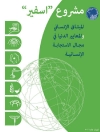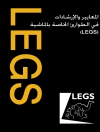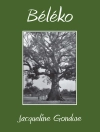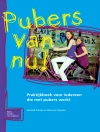This book draws from a rich history of scholarship about the relations between music and cities, and the global flows between music and urban experience. The contributions in this collection comment on the global city as a nexus of moving people, changing places, and shifting social relations, asking what popular music can tell us about cities, and vice versa.
Since the publication of the first Sounds and the City volume, various movements, changes and shifts have amplified debates about globalization. From the waves of people migrating to Europe from the Syrian civil war and other conflict zones, to the 2016 “Brexit” vote to leave the European Union and American presidential election of Donald Trump. These, and other events, appear to have exposed an anti-globalist retreat toward isolationism and a backlash against multiculturalism that has been termed “post-globalization.” Amidst this, what of popular music? Does music offer renewed spaces and avenues for public protest, for collective action and resistance? What can the diverse histories, hybridities, and legacies of popular music tell us about the ever-changing relations of people and cities?
表中的内容
1. Continuing the Conversations: Introducing Volume Two of Sounds and the City; Brett Lashua, Stephen Wagg, Karl Spracklen, M. Selim Yavuz. – Part 1: Cities of Origin?. 2. Re-Calling Grunge: Seattle, Anniversary Journalism and Changing Narratives of a Genre; Catherine Strong. – 3. Detroit: Techno City; Hillegonda C. Rietveld and Alessio Kolioulis. – 4. Placing the Music: Kingston, Reggae Music and the Rise of Popular Culture; Kevon Rhiney and Romain Cruse . – 5. Cleveland: ‘Where Rock Began to Roll’?; Brett Lashua. – Part 2: Global Cities?. – 6. From Rio to São Paulo: Shifting Urban Landscapes and Global Strategies for Brazilian Music; Kariann E. Goldschmitt. – 7. Placed: Dis/Placed – The Journeys of Jazz across Johannesburg; Gwen Ansell. – 8. Beijing is Rock, Shanghai is Jazz: Musical Identity Formations and Shifts in the Big City Soundscapes of China; Andrew David Field. – 9. Elusively Ubiquitous: Issues with the Applications of Hybridity in Visual Kei; Mira Malick. – 10. The Bayous of Borrowash: Cajun Music in Derby, England, in the Late Twentieth Century; Stephen Wagg. – 11. The Spaces of Early Rock and Roll in Hamburg-St Pauli; Julia Sneeringer. – 12. “Piano is My Homeland”: Subverting Violence Through Musical Resistance in Yarmouk Refugee Camp; S. Ali Mostolizadeh. – 13. Bollywood and the Life of Music in Twenty-First Century Mumbai; Gregory D. Booth. – Part 3: Legacies and Heritage?. – 14. Folk Music and Political Activism in Greenwich Village and at the Newport Folk Festival, 1935 – 1965; Stephen Petrus and Ronald D. Cohen. - 15. Madchester; Katie Milestone. – 16. In Hot Water: Cultural and Musical Conflict in The American Spa; Robert W. Fry. – 17. Provincial Towns and Yorkshire Cities: Post-Punk Sounds, Suburban Escape and Metro-Hegemony; Rio Goldhammer. – 18. Did Wigan have a Northern Soul?; Stephen Catterall and Keith Gildart. – 19. Austin and Americana Music: Sites of Protest, Progress and Millennial Cool; Dave Robinson. – 20. Afterword: Sounds and the City; Brett Lashua, Stephen Wagg, Karl Spracklen, and M. Selim Yavuz
关于作者
Brett Lashua is Reader in Leisure and Culture, Leeds Beckett University, UK.
Stephen Wagg is Professor of Sport and Society, Leeds Beckett University, UK.
Karl Spracklen is Professor of Music, Leisure and Culture, Leeds Beckett University, UK.
M. Selim Yavuz is a Ph D student in the School of Film, Music and Performing Arts, Leeds Beckett University, UK.












